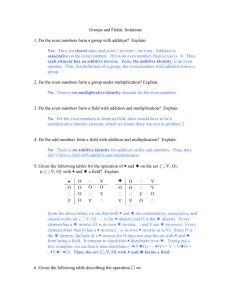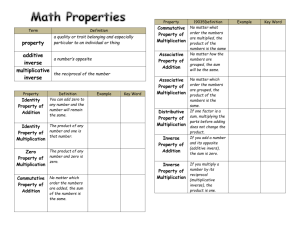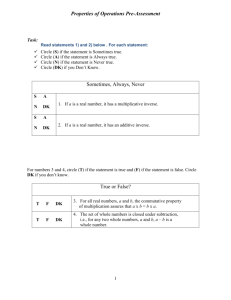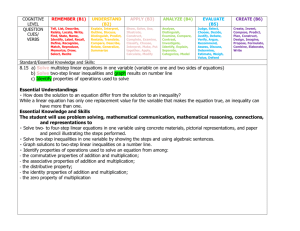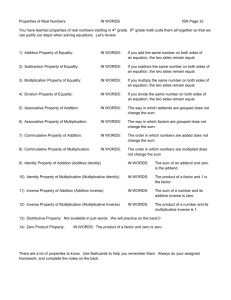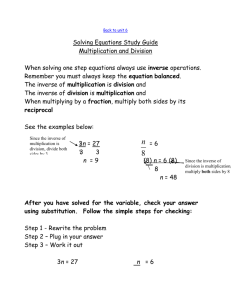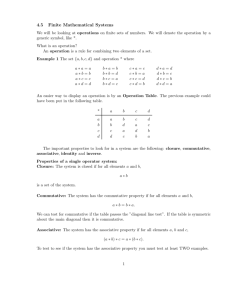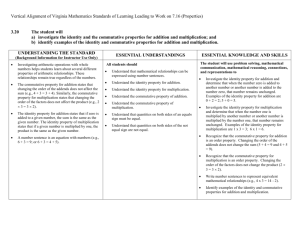RyanPropertiesOfAlgebra
advertisement
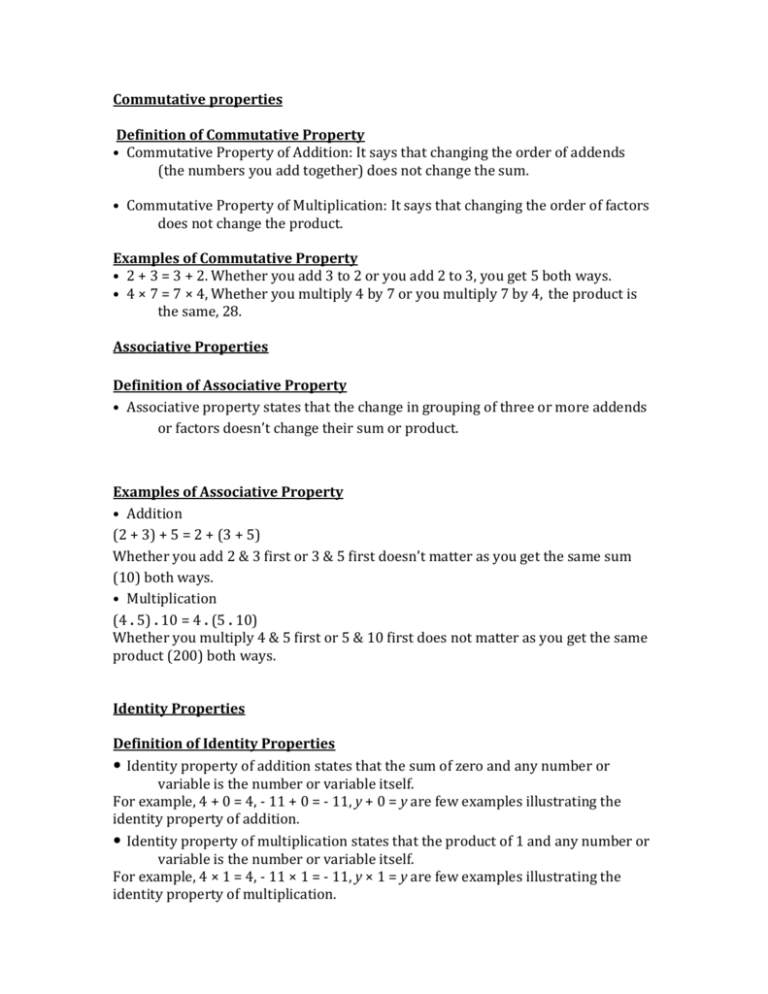
Commutative properties Definition of Commutative Property • Commutative Property of Addition: It says that changing the order of addends (the numbers you add together) does not change the sum. • Commutative Property of Multiplication: It says that changing the order of factors does not change the product. Examples of Commutative Property • 2 + 3 = 3 + 2. Whether you add 3 to 2 or you add 2 to 3, you get 5 both ways. • 4 × 7 = 7 × 4, Whether you multiply 4 by 7 or you multiply 7 by 4, the product is the same, 28. Associative Properties Definition of Associative Property • Associative property states that the change in grouping of three or more addends or factors doesn’t change their sum or product. Examples of Associative Property • Addition (2 + 3) + 5 = 2 + (3 + 5) Whether you add 2 & 3 first or 3 & 5 first doesn’t matter as you get the same sum (10) both ways. • Multiplication (4 . 5) . 10 = 4 . (5 . 10) Whether you multiply 4 & 5 first or 5 & 10 first does not matter as you get the same product (200) both ways. Identity Properties Definition of Identity Properties • Identity property of addition states that the sum of zero and any number or variable is the number or variable itself. For example, 4 + 0 = 4, - 11 + 0 = - 11, y + 0 = y are few examples illustrating the identity property of addition. • Identity property of multiplication states that the product of 1 and any number or variable is the number or variable itself. For example, 4 × 1 = 4, - 11 × 1 = - 11, y × 1 = y are few examples illustrating the identity property of multiplication. Distributive Property Definition of Distributive Property • Distributive property states that the product of a number and a sum is equal to the sum of the individual products of addends and the number. Examples of Distributive Property • 5(3 + 1) = 5 × 3 + 5 × 1 Like This: 5(3 + 1) = 5(4) = 20 Or This: 5 × 3 + 5 × 1 = 15 + 5 = 20 Equality Property Definition of The Property of Equality • Addition Property of Equality : If the same number is added to both sides of an equation, the two sides remain equal. Examples of Addition Property of Equality a) 3 = 3 Add the same number to both sides, 3+2=3+2 The same goes for subtraction, multiplication, and division. Inverse Properties Definition of Inverse Properties • Inverse Properties state that when a number is combined with its inverse, it is equal to • There are two types of inverses of a number: Additive Inverse and Multiplicative Inverse. • - a is the additive inverse of `a` if a + (- a) = 0. • 1/a is said to be multiplicative Inverse of a if a * 1/a = 1 . Example of Inverse Properties • The additive inverse of 54 is – 54 because if a is a real number, then the additive inverse of a is - a so that a + (- a) = 0.


